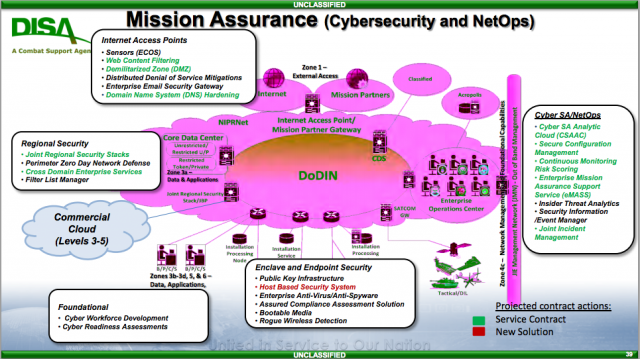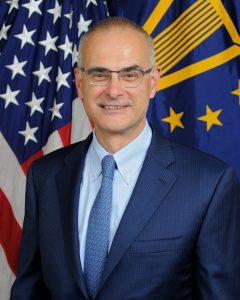Pentagon Rolls Out Major Cyber, AI Strategies This Summer
Posted on
ARLINGTON: The Pentagon is “weeks” away from rolling out official strategies on cyberspace, cybersecurity, and artificial intelligence that will create new capabilities and funding streams, the acting deputy CIO said this morning.
“Soon to be published — I would say in weeks — is the cyber strategy that supports the National Defense Strategy,” Thomas Michelli said this morning. “Shortly after that we’ll publish the cybersecurity strategy, (and) we are about ready to announce an artificial intelligence strategy.”
“When you see that, you’ll see we’re moving dollars and resources to artificial intelligence,” Michelli promised. “We’re setting up several capabilities within the Department (of Defense).”
Michelli didn’t divulge details. “I’m tapdancing a little bit here, because we’re getting ready to make a big announcement, coming out in weeks, and I don’t get ahead of that,” he said during Q&A at a CXO Tech Forum. “Watch this space. Stay tuned.”
That said, there’s plenty of existing guidance from the Pentagon CIO, Dana Deasy, and Defense Secretary Jim Mattis himself to give us the broad strokes. Everything starts with the National Defense Strategy Mattis issued in January, Michelli said — if you haven’t read it yet, he said, you should — from which derives the general cyber strategy, from which in turn derives the cybersecurity strategy: “All these things are mutually supporting.”
CIO Deasy has already set four intertwined priorities for Pentagon information technology in particular:
- artificial intelligence and machine learning;
- cybersecurity, for which AI is particularly critical;
- command, control, & communications (C3) network infrastructure, how the military transmits everything from top secret intelligence to orders for spare parts; and
- cloud computing — “we’re moving to cloud as fast as we can,” Michelli said.
The emphasis on AI comes from the top: “Secretary Mattis realized this is something that will enhance lethality, so he’s put a strong emphasis on artificial intelligence,” Michelli said. “He’s been out to Silicon Valley several times as well as other tech corridors.” Human brains can’t cope with the sheer volume of data pouring into the Pentagon, be it cybersecurity alerts or drone surveillance video, and in areas like cyber and electronic warfare, humans can’t keep up with the pace of events, either, forcing the military to a new reliance on AI. “We have to have a way to respond in milliseconds,” Michelli said.
Yes, there are risks in militarizing artificial intelligence, Michelli acknowledged. But those risks are manageable, he argued, if “we have trusted partners to develop it and are aware of the risks ….when we implement it.” And if we don’t invest in military AI, the alternative isn’t staying at some safe status quo, because the status quo is already fraught with risk and our adversaries are busily making it riskier. “We need to recognize, especially in cyber, that we accept risk everyday (already),” Michelli said. “There are already folks in our networks and systems.”
“We have move forward or else we’ll lose competitive advantage,” Michelli said. “Both China and Russia, our major competitors in the National Defense Strategy, are investing heavily in artificial intelligence.”
Echoing Mattis and other senior leaders, Michelli emphasized that the Defense Department needs to take a new attitude towards risk, one that focuses on understanding and managing it, but still taking some, rather than a bureaucratic effort to eliminate risk all together. The military needs to take some of the courage and risk-tolerance it shows on the battlefield and apply it to technological innovation.
“We put 18-year-olds downrange with weapons and the ability to make decisions on behalf of our national security,” Michelli said. “Sometimes we don’t feel willing to take that kind of risk back here.”
Subscribe to our newsletter
Promotions, new products and sales. Directly to your inbox.



